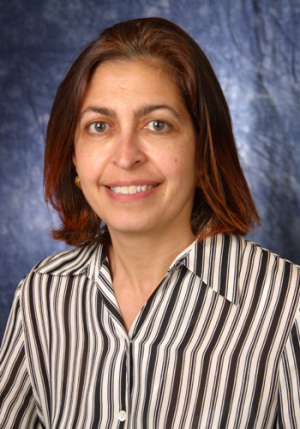Cullen College Professor of Environmental Engineering Hanadi Rifai has received a grant to expand her research into toxic chemicals in the Houston area’s major bodies of water.
The grant from the Texas Commission on Environmental Quality (TCEQ) is an extension of an award Rifai received last fall and brings the TCEQ’s support for this research to $500,000. The earlier round of funding went toward work focusing on the Houston Ship Channel. This extension will allow Rifai and her team to expand their research into the open areas of Galveston Bay.
In particular, Rifai is investigating two specific classes of pollutants: dioxins, which are highly toxic byproducts of many industrial processes; and polychlorinated biphenyl’s, or PCBs, a class of chemical compounds used in many commercial applications until their production was banned in the United States in 1979.
Rifai has a long and successful track record of identifying sources of pollutants in Houston-area waters. Her team, for instance, was instrumental in locating a former waste site at Interstate Highway 10 and the San Jacinto River that was the source of significant dioxin pollution. That area is now an EPA Superfund cleanup site.
“These pollutants are nasty 21st-century realities that we have to deal with,” she said. “They present a complex challenge because they’re in the air, in the soil, in the water. The pathway of exposure in this particular case is by ingesting contaminated seafood.”
Rifai and her team, then, will take water, sediment and marine life sample at various locations in the ship channel and bay. Specifically, they will look for the sources of the pollutants; areas in the water and sediment with high concentrations of dioxins and PCBs; and their concentrations in the tissue of marine life, with a focus on prized species such as trout and bass.
What they find will likely be used by the TCEQ to determine how to best manage these pollutants. Possible courses of action include bioremediation techniques that essentially neutralize the harmful chemicals and commercial fishing bans in certain areas. Sediment removal is also a possibility, she said, though when performed elsewhere that method has stirred up pollutants in the sediment, and actually resulting in more harmful chemicals in the water.
Just as important as the expanded testing and remediation, though, is what this new round of funding represents. By expanding this research effort, the TCEQ is signaling that it will likely invest more resources into dioxin and PCB research and remediation during the next few years, Rifai said. “The state wants to take a holistic view of all the state waters and figure out what’s going on with dioxin and PCBs. The expanded scope of this grant is a sign that they are actually going to do this and researchers are going to get the resources to make it happen.”
